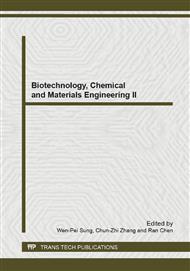p.732
p.736
p.740
p.744
p.748
p.752
p.756
p.760
p.765
Effects of Different Intensity Walking on Serum Nitric Oxide for the Elderly Men
Abstract:
Objective: In order to study the effect of different intensity exercise on serum nitric oxide and nitric oxide synthase of elderly men, and look for the most appropriate exercise intensity for them which can prevent cardiovascular disease. Methods: 36 men who are 55 to 62 years old, were randomly divided into the low intensity group(L group,n=12), the moderate-intensity group(M group,n=12) and the high-intensity group(H group,n=12). During the period for testing, they walked for 12 weeks, 4 times per week, 45 minutes for each time,target heart rate is 100 ~110 beats/min(L group), 110 ~120 beats/min(M group), 120~ 130 beats/min(H group). With an over-night fast, all the subject venous blood samples were drawn by 4ml before and after the exercise. The blood samples were centrifuged and separated immediately, then serum nitric oxide content, TNOS activity, cNOS activity, iNOS activity were measured.Results:In low-intensity group, serum NO content, TNOS activity, cNOS activity were significantly increased than pre-exercise (P<0.05); in moderate-intensity group,serum NO content,TNOS activity,cNOS activity were very significantly increased than pre-exercise (P <0.01);the indicators of high-intensity exercise group did not change significantly. Conclusion: we recommend that a more appropriate exercise intensity is 100-120 beats /min for elderly during fitness exercise, and especially 110-120 beats/min. Such intensity exercise can increase NO content in vivo, thus effectively prevent the occurrence of cardiovascular disease.
Info:
Periodical:
Pages:
748-751
Citation:
Online since:
January 2013
Authors:
Keywords:
Price:
Сopyright:
© 2013 Trans Tech Publications Ltd. All Rights Reserved
Share:
Citation:


